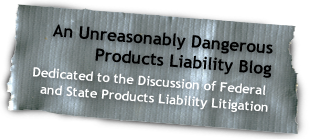Judge dismisses Suit against Cooley Law School
A few months ago, we ran a series about the ongoing debate about higher education, including legal education – ts merits, cost-benefit analysis, and interviews with those in the field. In those posts, we remarked that several lawsuits had sprung up around the country against law schools for misrepresenting data about their job placement numbers and salaries. One such suit was filed by a dozen graduates of the Thomas M. Cooley Law School, who alleged that they would not have spent the money to attend the school if they had known the truth about job prospects coming out of the school. The plaintiffs sought $250 million in damages.
On July 20, 2012, the Michigan federal court where the case was pending dismissed it after the law school filed a 12(b)(6) motion. A full copy of the Court’s decision can be found here [PDF]. As Judge Gordon J. Quist, the author of the opinion, notes, this dismissal follows the same result in a nearly-identical suit against the New York Law School. A copy of that decision can be found here [PDF], and our friends at Above the Law make some great points about that decision in this post.
So why are these lawsuits failing? Well, according to these two decisions, the schools did not make false representations. As the Michigan court quoted, “[a] plaintiff’s subjective misunderstanding of information that is not objectively false or misleading cannot mean that a defendant has committed the tort of fraudulent misrepresentation.” Ouch. Judge Quist apparently does not think much of the prospective students’ reasoning abilities.
Judge Schweitzer, the author of the case out of New York, reached the same conclusion, but for an opposite reason. He called applicants to law schools “a sophisticated subset of educational consumers, capable of sifting through data and weighing alternatives before making a decision regarding their post college options.” It appears that Judge Schweitzer believes these students to be very capable of weeding through the data, but too lazy to do so. Again, not the best depiction of prospective law students.
And yet all is not lost. The Wall Street Journal’s Law Blog updated its original post on the issue with a quote from Jesse Strauss, an attorney for the plaintiffs in the Cooley Law School case. Even though Mr. Strauss seems ambivalent about appealing the decision to dismiss the case, he claims a small victory: “It’s important to know what this litigation has helped to accomplish. Students applying to law school now have more and better information than ever before.”
True, the ABA has changed some of its reporting requirements to add some transparency, and even Cooley is reporting statistics differently.
The crucial question, however, remains: if the value of higher education (and legal eduction) is potentially lower than expected or reported, can schools continue to charge more and more tuition? And will the microscope that has been placed squarely on higher education result in lower enrollment down the line? We’ll have to wait for the statistics, I guess.














